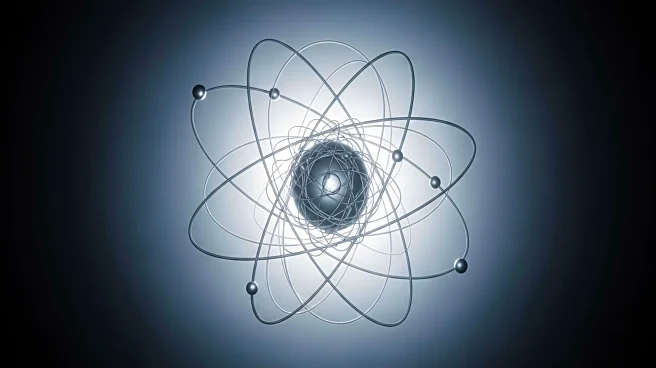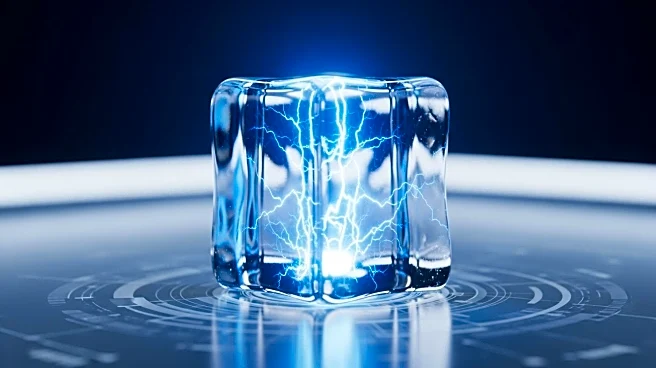What is the story about?
What's Happening?
Physicists at CERN's ISOLDE facility have pinpointed the boundary of an 'island of inversion' where the conventional nuclear shell model fails. This discovery focuses on the neutron number 40, a region where the usual order of nuclear shell filling breaks down, leading to unusual shapes and properties of atomic nuclei. The research involved studying the chromium-61 nucleus, which has 24 protons and 37 neutrons, using collinear resonance ionization spectroscopy. The findings revealed that chromium-61's shell-filling configuration lies between expected configurations for nuclei inside and outside the island of inversion, thus defining the western border of this region.
Why It's Important?
Understanding the breakdown of the nuclear shell model is crucial for advancing nuclear physics and developing a comprehensive model applicable to all atomic nuclei. The discovery of the island of inversion challenges existing theories and provides insights into the rapid evolution of nuclear structures. This research contributes to a deeper understanding of the forces that bind protons and neutrons within atomic nuclei, potentially impacting fields such as nuclear energy and particle physics. The findings may also influence future studies on neutron-rich nuclei and their applications in various scientific domains.
What's Next?
The research at CERN is expected to continue exploring other regions of the nuclear chart where the shell model breaks down. Further studies may focus on different isotopes and their properties, aiming to refine theoretical models and enhance the understanding of nuclear structure evolution. The insights gained from this research could lead to advancements in nuclear technology and inform the development of new materials and energy solutions.
Beyond the Headlines
The study of islands of inversion not only advances nuclear physics but also highlights the complexity and diversity of atomic structures. These regions challenge conventional understanding and encourage the development of innovative approaches to studying atomic nuclei. The collaboration between international research facilities like CERN underscores the importance of global scientific cooperation in tackling complex scientific questions.
AI Generated Content
Do you find this article useful?















